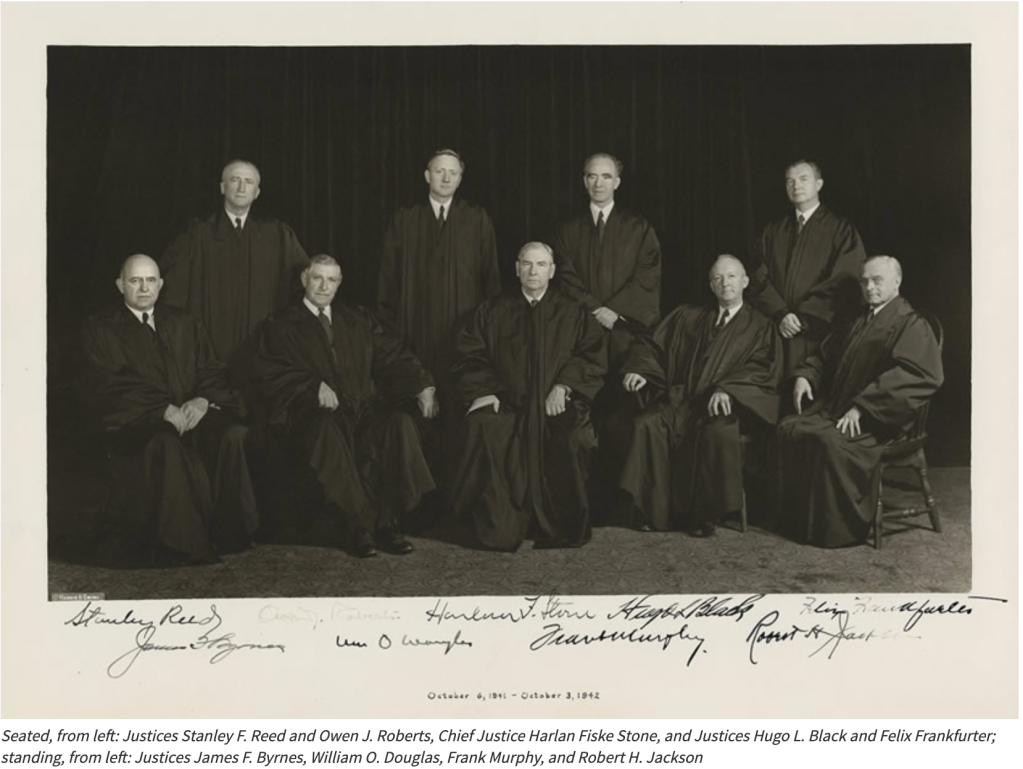James F. Byrnes (1882-1972) was elected to Congress as a Democrat from South Carolina in 1910, then to the Senate in 1930. Franklin Roosevelt appointed him to the Supreme Court in 1941. Fifteen months later, FDR asked Byrnes to leave the Court to “run the war” in the Office of Economic Stabilization, and then in 1943 as the head of War Mobilization.
Byrnes might have been Roosevelt’s Vice Presidential running mate in 1944, but party leaders in FDR’s home state of New York favored Harry Truman over a VP from the deep south, with its long history of racial segregation. After FDR’s death, Byrnes served as Truman’s Secretary of State from July 3, 1945 until January 21, 1947. Byrnes endorsed Dixiecrat Strom Thurman for President in 1948.
Byrnes was elected Governor of South Carolina in 1950 as a segregationist. He then embraced the Republican Party. His 1958 autobiography, All In One Lifetime, includes a chapter about his brief tenure on the Supreme Court, referencing his first opinion, Edwards v. California (1941). Byrnes’ helpful word about immigration is very relevant today:
Following the depression, thousands of people migrated to that state–not entirely because of the mild climate, but because of its liberal allowances for relief. In this situation the state legislature enacted a law making it a misdemeanor for anyone to bring, or assist in bringing, into California, a non-resident, knowing him to be indigent. In December, 1939, Edwards, who lived in Marysville, California, went to Texas in order to bring back with him his wife’s unemployed brother. Edwards was subsequently prosecuted and, upon admitting the facts, was convicted and sentenced to six months’ imprisonment. …
… I based reversal on the Commerce Clause, which had been frequently construed by the Court as protecting the interstate travel of persons as well as commodities. The social phenomenon of large-scale migration of citizens did not admit of diverse treatment by the several states; for if one state could deny admission to a person regarded as indigent, others would surely adopt retaliatory measures.

From “All Together for the Camera: A History of the Supreme Court’s Group Photograph,” Visiting the Court, supremecourt.gov.
